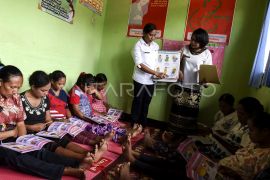As many as 60 percent of Indonesia's population lives in Java and Sumatra. The very large population is a complex problemJakarta (ANTARA) - The National Population and Family Planning Agency (BKKBN) stated that Indonesia's large and continuously growing population presented a complex problem.
"As many as 60 percent of Indonesia's population lives in Java and Sumatra. The very large population is a complex problem," BKKBN Deputy for Population Control Bonivasius Prasetya Ichtiarto stated when confirmed here on Thursday.
According to the result of the 2020 Population Census, Indonesia's population touched 270.20 million people. The figure is forecast to continue to grow, thereby affecting various aspects of the people's lives, including the economic and social aspects.
One of the effects is the increasing number of adolescents.
Related news: BKKBN updates data of 39 million household heads in PK22
Ichtiarto said the BKKBN projected that Indonesia's adolescent population will surpass 47 million by 2025.
On the other hand, the quality of life of older adults in Indonesia is improving. It is noted that the number of older adults also continues to grow. He said that in 2021 alone, Indonesia already had 29.3 million older adults, or 10.82 percent of the total population.
"Not to mention the problem of the productive age population and the percentage of the population living in urban areas. It will increase, especially because of the movement of people from villages to provinces that are the target of urbanization," he further remarked.
Nevertheless, population growth does not always bring bad effects, he said. Indonesia is projected to have the opportunity to attain a demographic dividend by 2030, which can be a development potential if managed properly.
Related news: BKKBN bolstering lactation education among working mothers
Due to the complexity, the central and regional governments must strengthen synergy for population development planning. However, 17 provinces have not formulated the Grand Design for Population Development (GPDK) for the five pillars of development.
The five pillars encompass population quantity control, increasing population quality, family development, structuring distribution and direction of mobility, and structuring population administration.
He noted that the GPDK is needed to serve as the basis for handling population problems in a planned, systematic, and sustainable manner. This is because the formulation of the GPDK is mainly related to the quantity aspect.
The GPDK also serves as a tool for monitoring and evaluating the implementation of population development to ensure it follows the established development planning.
Related news: BKKBN develops micro-level population, family data center
Related news: BKKBN organizes civil servant training for smart governance
Translator: Hreeloita Dharma, Raka Adji
Editor: Fardah Assegaf
Copyright © ANTARA 2022












